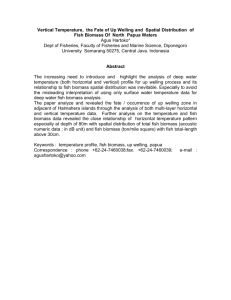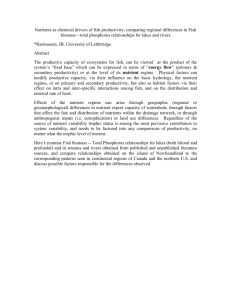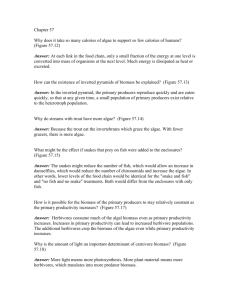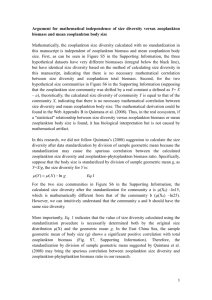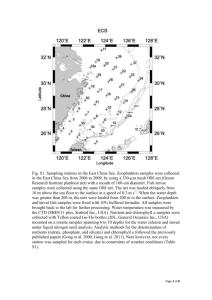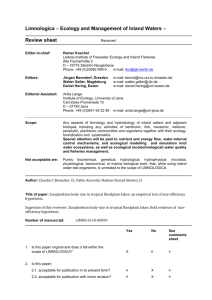Elsevier Editorial System(tm) for Limnologica
advertisement
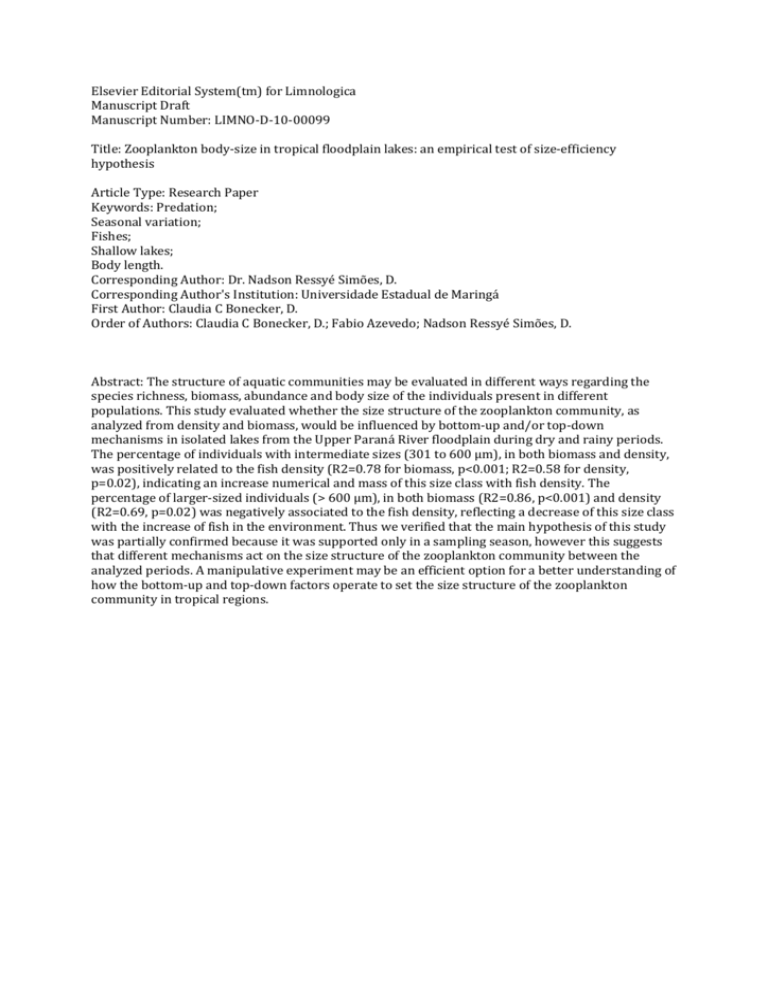
Elsevier Editorial System(tm) for Limnologica Manuscript Draft Manuscript Number: LIMNO-D-10-00099 Title: Zooplankton body-size in tropical floodplain lakes: an empirical test of size-efficiency hypothesis Article Type: Research Paper Keywords: Predation; Seasonal variation; Fishes; Shallow lakes; Body length. Corresponding Author: Dr. Nadson Ressyé Simões, D. Corresponding Author's Institution: Universidade Estadual de Maringá First Author: Claudia C Bonecker, D. Order of Authors: Claudia C Bonecker, D.; Fabio Azevedo; Nadson Ressyé Simões, D. Abstract: The structure of aquatic communities may be evaluated in different ways regarding the species richness, biomass, abundance and body size of the individuals present in different populations. This study evaluated whether the size structure of the zooplankton community, as analyzed from density and biomass, would be influenced by bottom-up and/or top-down mechanisms in isolated lakes from the Upper Paraná River floodplain during dry and rainy periods. The percentage of individuals with intermediate sizes (301 to 600 μm), in both biomass and density, was positively related to the fish density (R2=0.78 for biomass, p<0.001; R2=0.58 for density, p=0.02), indicating an increase numerical and mass of this size class with fish density. The percentage of larger-sized individuals (> 600 μm), in both biomass (R2=0.86, p<0.001) and density (R2=0.69, p=0.02) was negatively associated to the fish density, reflecting a decrease of this size class with the increase of fish in the environment. Thus we verified that the main hypothesis of this study was partially confirmed because it was supported only in a sampling season, however this suggests that different mechanisms act on the size structure of the zooplankton community between the analyzed periods. A manipulative experiment may be an efficient option for a better understanding of how the bottom-up and top-down factors operate to set the size structure of the zooplankton community in tropical regions.



